Indeed, what is most important when choosing a smartphone from 2014? Screen, memory, hardware, performance, software, abundance of applications, or is it still the price? In fact, it is important to maintain a fine balance between all parameters, and this is the only way to buy an inexpensive and powerful smartphone With excellent characteristics, the benefits of which will be noticeable in practice, and not just when reading laudatory reviews on the Internet.
To do this, you must initially correctly determine the most important priorities in a smartphone and correlate them with your own requirements and wishes.
Comfort bar
One of the beauties of the HD revolution in the field mobile screens Manufacturers have become completely indiscriminate about what exactly they produce. For most users, any type of HD screen remains a significant quality bar to this day, while leading manufacturers are rushing to get rid of old production screens with a pixel density of less than 400 ppi. The problem is that today many of us vote with rubles, based on numbers and values, seriously believing in the benefits of Quad HD resolutions directly for them.
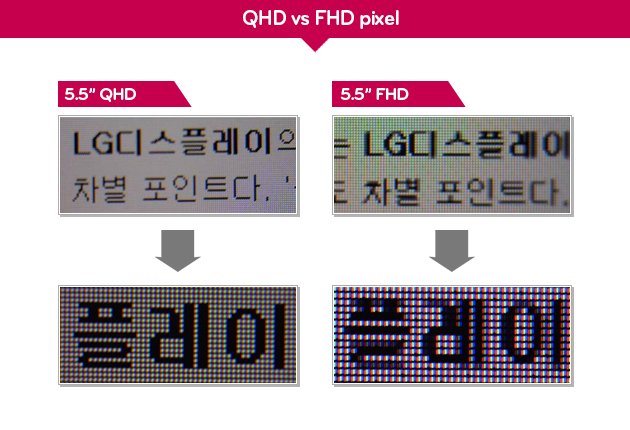 All the advantages of a Quad HD screen using the example of LG G3 advertising
All the advantages of a Quad HD screen using the example of LG G3 advertising
However, most of us remain victims of cunning marketing, which has long learned to work real miracles, using the simplest and most intelligible tools to promote subtle and complex matters. Buyers of audio equipment were among the first to come under this influence since the end of the last century, when they began to actively feed us with Hi-End, Hi-Fi nameplates and other abbreviations of a dubious nature.
Lots of useless and non-binding abbreviations
In the mobile industry, Apple was the first to capture the power of the acronym word. Retina, which emphasized all the advantages of a screen on which it is impossible to see individual pixels - it all reminds frequency range audiophile headphones, which can reach 45-60 KHz, although 99% of school graduates no longer distinguish sound above 16 KHz, and by the time they buy a flagship smartphone, many students stop paying attention to 14 KHz squeak. The same thing happens with vision, which is capable of distinguishing individual pixels up to 300 DPI, or noticing individual fragments on screens over 400 DPI.

Convincing buyers of the benefits of Retina screens was quite easy
And if the human eye barely detects the difference between 300 and 400 DPI, what's the point of paying extra for ultra-fine materials? There is a point, but so far it is only associated with use in helmets virtual reality. If so, we recommend that you first pay attention to 720p screens with a diagonal of up to 5”, or 1080p for large smartphones and phablets.
Matrix type
Having decided on the resolution, many people have questions about choosing the type of screen. In fact, this choice is more of a holly war (war for the sake of process), because the largest manufacturers have been supplying their mobile businesses with their own screens for a long time. Samsung and LG do this, and Sony has united its production into a single alliance, Japan Display Inc. back in 2011.
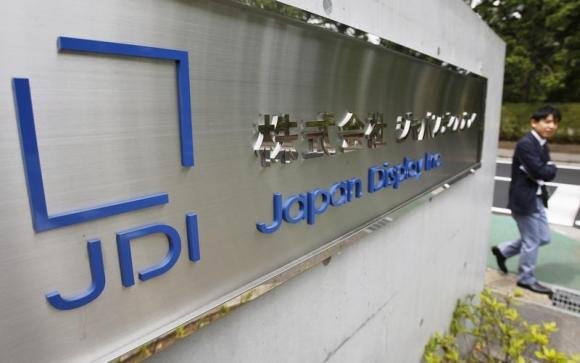 By the way, for this very reason, the Xperia Z at one time received a terrible TFT screen, although the resolution was Full HD. Today Sony does not allow such mistakes, and in general the market uses several main types of matrices.
By the way, for this very reason, the Xperia Z at one time received a terrible TFT screen, although the resolution was Full HD. Today Sony does not allow such mistakes, and in general the market uses several main types of matrices.
TFT screen
The most widespread technology for manufacturing LCD screens, used in the vast majority of budget devices. Today, the technology is considered obsolete and is used in the most widespread electronics sector:
- Majority
- Most PC monitors under 5,000 rubles
- Most phones and smartphones up to 5,000 rubles
- Navigators, photo frames and budget cameras
- Most compact TVs are up to 27".
The key advantage of such screens lies solely in their low cost and low output price, which makes it possible to produce surprisingly affordable products of good quality.
IPS screen
The most widespread and popular technology for manufacturing LCD screens, key feature which is the placement of the entire grid of pixels directly on the surface of the matrix - this allows you not to think about the quality of black color rendering and viewing angles, enjoying bright, saturated color rendering with full coverage of the RGB range. The first generation of IPS (1996-2008) had a serious drawback associated with a long response time, which is why manufacturers deliberately inflated the already high cost of IPS panels, thereby protecting their products from the mass segment of buyers.
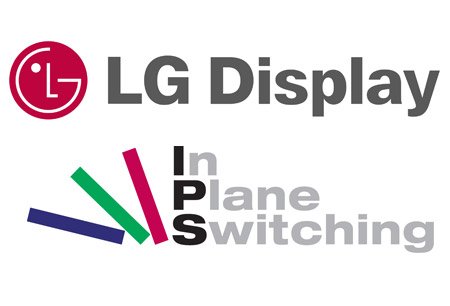
Since 2009, LG has come a long way in the development of this technology, using Hitachi-IPS developments as a basis. Thanks to them, successful multi-billion dollar contracts with Apple, a surge in the popularity of the iPad and a further sharp boom in the television market, LG quickly got rid of all the weak points of IPS, including response time. The result is the best screens in the world that are readily available in production and are now installed in the vast majority of smartphones, laptops and even smart watches.
VA - screen

In total, “passive” IPS technology includes PVA matrices from Samsung, ASVA matrices from Sharp and Super MVA from Chi Mei Corporation. All of them are actively used in the vast majority of smartphones in the mid-price segment, as well as in most smartphones from the Middle Kingdom.
AMOLED screen
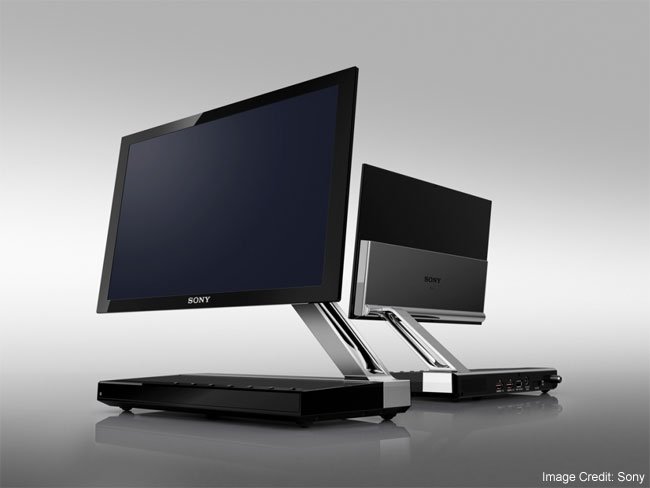
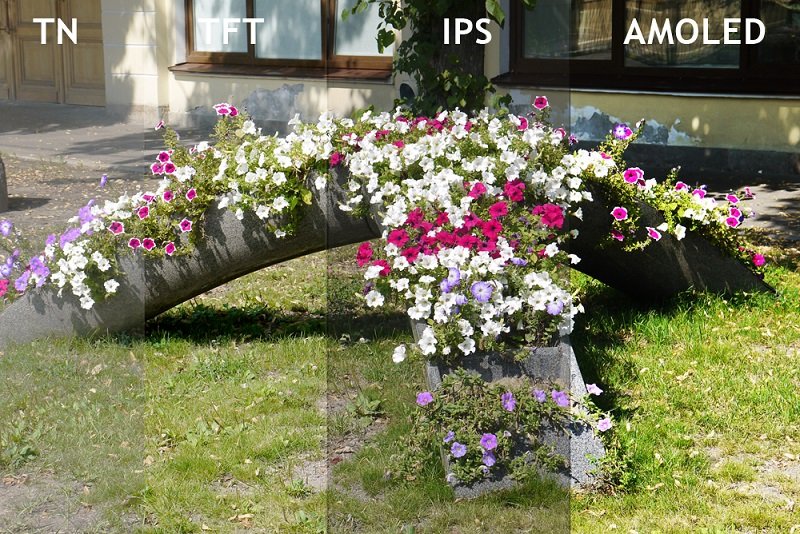
traditional ideas about the nature of color rendering various types screens
AMOLED is a display manufacturing technology that uses organic light-emitting diodes as pixels, which are very sensitive to any change in current and magnetic field- they can fall into a black trance and surprise with the depth of darkness, but as soon as you apply maximum voltage to them, they will begin to glow as bright white as LED flashlight. The range of the color spectrum is limited only by the current characteristics, and this allows you to work real miracles. Organic LEDs do not need any backlight lamps; the main thing is that the power stabilizer is more precise.

OLED works on the same principle as stadium screens. The pixels themselves are illuminated, not their substrate.
But Samsung struggled with the accuracy of energy supply for a long time. The first batches of screens came out with 90% defects, each screen cost a dozen rejections, but the Koreans did not give up and since 2012 they have finally switched all flagships to this type of matrix.
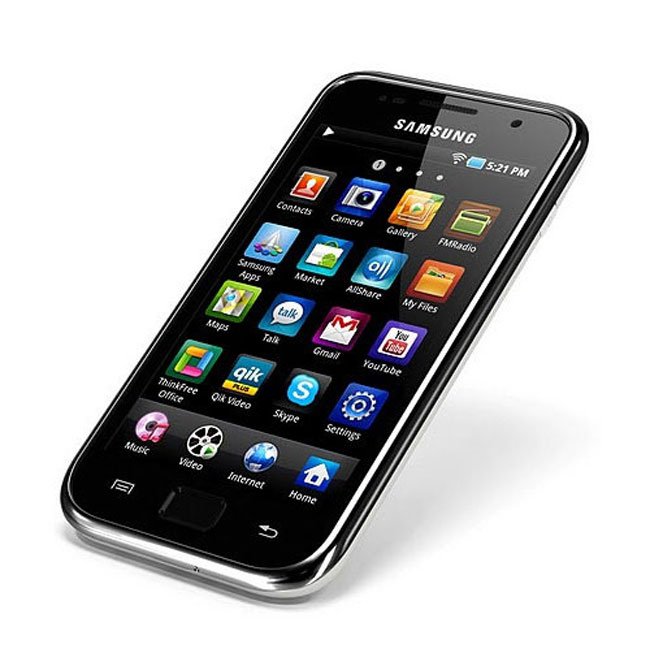
color rendering Samsung Galaxy S became famous for its poisonous palette and colossal brightness
Around the same time, the company managed to finally defeat the nasty small currents and achieve complete control over organic matter - already in the Galaxy SIII, options for changing color profiles appeared, and the screen Galaxy Note 4 is recognized as the standard for RGB color reproduction in the consumer and semi-professional electronics industry.
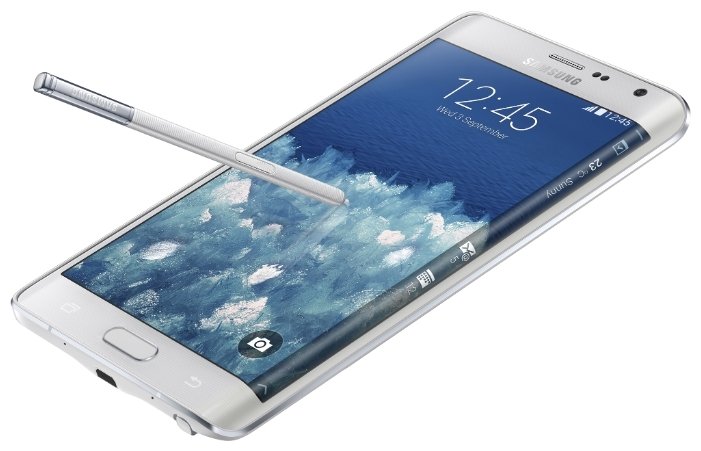
For a second, today the AMOLED screen is the best image output device in the world, ready to disguise itself as any object. And they work no less than flash memory with a limited resource, allowing it to work without failure for 4-5 years.
PLS - screen
Having created an ideal AMOLED screen in all respects, Samsung actively developed the IPS direction for the people, introducing at the end of 2011 its own PLS matrix with a declared display of more than 98% of the IPS color spectrum, but 15-20% cheaper in production costs.
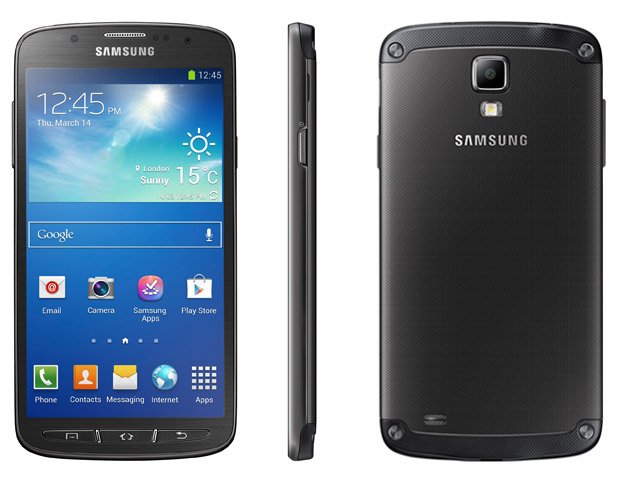
The first devices with these matrices appeared in 2013, immediately winning the love and recognition of customers with their deliberately low point of maximum contrast. Galaxy smartphones S4 Active still looks quite confident against the background of IPS matrices in competing products, providing low power consumption, extreme viewing angles and a white color temperature close to the standard around 6700 K.
Briefly about the main thing
Now that we're posing Having familiarized ourselves with each type of screen and learned all its intricacies, it’s time to sum up a few simple rules choosing a smartphone with excellent screen, without slipping into buying a flagship.
So, if you are not ready to settle for less under any circumstances, go ahead and buy the Samsung Galaxy Note 4 - it is the smartphone with the best screen in the world as of December 2014.
If you are ready to come down to earth a little, choose the most advanced smartphones of the current year - they have the most advanced screen controllers, guaranteeing speed and accuracy of image output.
In all other cases, it is enough to follow a few simple and concise rules when choosing a smartphone, and these rules apply in various price categories, but are especially effective when choosing an entry-level and mid-level smartphone.
Full HD screen corresponding filling. You shouldn't rush to the highest screen resolution. Such a resolution requires the smartphone to have appropriate computing power, which is especially noticeable in games and when watching videos. A weak engine is like a small engine in a luxury sedan - it will constantly work at the limit, using up precious battery power.
Use relevant content. Today, many smartphones have gorgeous ultra-high-resolution screens, but they often have only 16 GB of internal memory, or even 8 GB. Moreover, any 720p video on such a screen will look much worse than on a screen of the corresponding resolution. In this regard, we recommend that you figure out in advance what kind of content and in what quality you are going to store and watch on your smartphone.
Don't chase size. It is often tempting to choose a smartphone with a slightly larger screen size, sacrificing a little resolution. This is only true if you plan to use the smartphone you are purchasing as an additional device when traveling, or as a navigator for your car. Believe me, much more often you need to see small text on a website on a smartphone screen than watch your favorite TV series.
Rate your tastes. Many people consider flashy bright colors to be excessive and annoying, while the majority choose their TV in stores, giving preference to the most saturated color palettes. Screen manufacturers know this very well and prefer to display the most saturated colors in a set of background images. Try to open those pictures on the smartphone you like, the colors of which do not cause you doubts - most likely the difference will be much less noticeable.
And finally, a simple rule for choosing a Retina display from Apple itself.
So, a screen with 300 DPI today is:
- 3.2” at 960 x 540 pixels resolution
- 4.8” at a resolution of 1280 x 720 pixels
- 8” with a resolution of 1920 x 1080 pixels.
Anything below this mark automatically becomes a cutting-edge Retina display from the point of view of Apple itself. And if so, all we have to do is choose the right model and enjoy the Retina revolution without any special expenses.
Buyon's opinion
We are confident that this material will greatly facilitate your search for the ideal smartphone that fully meets all the basic requirements and can delight you with excellent picture quality at any time. Indeed, only looking back can you feel all the dynamics and rapidity of technological progress, which brought a real HD revolution in the hands of many of us. And if not, it's easy to fix.
How to choose from the variety of modern smartphones what is right for you? Today the bad-android team has prepared material with useful tips on the topic of display selection.
How not to overpay for a device? How can you figure out what to expect from it based on the type of display?
Types of matrices
IN modern smartphones are used three basic types of matrices.
The first of them, called - is based on organic light-emitting diodes. The remaining two types are based on liquid crystals - IPS And TN+film.
It is impossible not to mention the frequently encountered abbreviation TFT.
TFT- these are thin-film transistors that control subpixels of displays (subpixels are responsible for the three primary colors, on the basis of which “full” “multicolor” pixels are formed, which we will talk about a little later).
Technology TFT applies in all three types of matrices listed above. That is why the often used comparison TFT And IPS is essentially absurd.
For many years, the main material for TFT matrices was amorphous silicon. On this moment launched an improved production of TFT matrices, in which the main material is polycrystalline silicon, significantly increasing energy efficiency. The size of the transistors has also been reduced, which allows achieving the highest performance. ppi(pixel density).
So, we’ve sorted out the matrix base, it’s time to talk directly about the data types of matrices.
At the moment, this type of matrix is the most common. Also, IPS matrices are sometimes designated by the abbreviation S.F.T..
Story IPS-matrix originates several decades ago. During this period, many different modifications and improvements were developed IPS-displays.
When listing the advantages and disadvantages of IPS, it is necessary to take into account the specific subtype. To summarize, for the list of strengths of IPS we will take the best subtype (and therefore the most expensive), and for the disadvantages we will keep in mind the cheapest subtype.
Advantages:
Excellent viewing angles (maximum 180 degrees)
High-quality color rendition
Possibility of producing high ppi displays
Good energy efficiency
Flaws:
Picture fades when the display is tilted
Possible oversaturation or, conversely, insufficient color saturation
AMOLED matrix
The matrix provides the deepest black color, compared to the other two types of matrices. But it was not always so. The first AMOLED matrices had implausible color reproduction and insufficient color depth. There was some acidity in the picture, too intense brightness.
Until now, due to internal incorrect settings, some displays are almost identical in perception to IPS. But in super-AMOLED displays, all flaws were successfully fixed.
When listing the advantages and disadvantages, let’s take a regular AMOLED matrix.
Advantages:
The highest quality picture among all existing types of matrices
Low power consumption
Flaws:
Occasionally uneven lifespan of LEDs (different colors)
The need for careful customization of the AMOLED display
Let's sum up the intermediate results. Obviously, the matrices are leaders in image quality. It is AMOLED displays that are installed on the most top-end devices. In second place are IPS matrices, but you should be careful with them: manufacturers rarely indicate the subtype of the matrix, and this is what plays a key role in the final level of the image. An unambiguous and firm “no” should be said to devices with TN+film matrices.
Subpixels
The determining factor in the final quality of the display is often hidden display characteristics. Image perception is strongly influenced by subpixels.
In case of LCD the situation is quite simple: everyone is colored ( RGB) pixel consists of three subpixels. The shape of the subpixels depends on the modification of the technology - a subpixel can be shaped like a “check mark” or a rectangle.
In the implementation of displays in terms of subpixels, everything is somewhat more complicated. In this case, the light source is the subpixels themselves. As you know, the human eye is less sensitive to blue and red colors, in contrast to green. That is why repeating the IPS subpixel pattern would significantly affect the picture quality (of course, in the worst side). To preserve the realistic color rendering, technology was invented.
The essence of the technology is to use two pairs of pixels: RG (red-green) and BG (blue-green), which, in turn, consist of corresponding subpixels of the corresponding colors. A combination of subpixel shapes is used: green ones have an elongated shape, and red and blue ones are almost square.
The technology turned out to be not very successful: the white color was frankly “dirty”, and notches appeared at the junctions of different shades. At a low rate ppi a grid of subpixels became visible. Such matrices have been installed on a number of smartphones, including flagships. The last flagship that was “lucky” to get a PenTile matrix was Samsung Galaxy S III.
Naturally, it was impossible to leave the situation with low-quality implementation of subpixels in the same state, so soon the upgrade above the described technology, which received the prefix Diamond.
By increasing ppi Diamond PenTile made it possible to get rid of the problem with jagged boundaries between colors, and white became much “cleaner” and more pleasing to the eye. And it is this development that is installed in all Samsung flagships, starting with the Galaxy S4.
And here IPS-matrices, although they are generally considered weaker than ’ov’s ones, however, have never encountered such problems.
What conclusion can be drawn? Be sure to pay attention to the quantity ppi in case of purchasing a smartphone with an -matrix. A high-quality picture is only possible with an indicator of 300 ppi. But with IPS matrices do not have such strict restrictions.
Innovative technologies
Time does not stand still; talented engineers continue to work painstakingly to improve all characteristics of smartphones, including matrices. One of the latest serious developments is technology O.G.S..
O.G.S. is an air gap between the screen itself and the projective-capacitive sensor. IN in this case the technology met expectations 100%: color rendering quality, maximum brightness and viewing angles increased.
And over the past few years O.G.S. It has become so embedded in smartphones that you won’t find the implementation of a “hamburger” display filled with an air gap except on the simplest devices.
In their search for display optimization, designers came across another interesting opportunity to improve the picture on phones. In 2011, experiments began on shape glass Perhaps the most common form of glass among the unusual ones has become 2.5D- with the help of curved edges of the glass, the edges become smoother and the screen becomes more voluminous.
Company HTC released a smartphone Sensation, the glass of which was concave in the center of the display. According to HTC engineers, this increases protection from scratches and impacts. But glass concave to the center never received widespread use.
The concept of bending the display itself, and not just the glass, as was done in . One of the side edges of the display has a curved shape.
A very interesting characteristic that you should pay attention to when buying a smartphone is sensor sensitivity. Some smartphones are equipped with a sensor with increased sensitivity, which allows you to fully use the display even with regular gloves. Also, some devices are equipped with an inductive substrate to support styluses.
So for those who like to text in the cold or use a stylus, the sensitive sensor will definitely come in handy.
Known truths
It's no secret that screen resolution also greatly affects the final level of the image. Without further comment, we present to your attention a table of correspondence between display diagonal and resolution.
Conclusion
Each matrix has its own characteristics and hidden characteristics. You should be careful with -displays, or rather, with the ppi pixel density indicator: if the value less than 300 ppi, then the picture quality will tell you frankly will disappoint.
For IPS-matrix is important subtype, and depending on the subtype, the cost of the smartphone logically increases proportionally.
Curved glass 2.5D will significantly increase the attractiveness of the picture, as will technology O.G.S..
The issue of display size is a purely individual one, but with multi-inch “shovels” a high resolution would be appropriate.
We wish you pleasant shopping, friends!
Stay tuned, more to come a lot of interesting.
Color LCD displays are divided into two types: active and passive. - this is “STN” (Super Twisted Nematic). Here, “nematic” denotes the type of liquid crystal used: nematic crystal molecules are characterized by the presence of orientational and lack of positional order. The technology of “twisted nematic” (twisted crystals) improves image contrast.
The basic principle of operation of STN: the image is formed line by line due to the sequential supply of control voltage to individual cells, which makes them transparent.
STN displays have worse characteristics than TFT displays: as a rule, they have a lower resolution and can display a significantly smaller number of colors. A serious disadvantage of STN matrices is the small viewing angle of the screen - it is better to look at it from a certain angle, then the colors will appear clear. In bright sunlight, such screens “blind” - the information on the display becomes difficult to see
However, STN displays are approximately three times cheaper than their TFT counterparts, so they are actively used by phone manufacturers in models in the budget price category, for example:,.
The graph compares the voltage transmittance across the electrodes of LCD displays based on a typical twisted nematic (TN) and a super twisted nematic (STN). (Actually, increasing the twist angle is equivalent to increasing multiplexing). The points on the graph V90 and V10 characterize the voltages at which light transmission is 90% and 10%, respectively.
The figure shows that the slope of the STN display characteristic is higher than that of the TN display, which allows the first type of display to be performed with a higher level of multiplexing. (Supernematics were developed primarily to overcome the difficulty of increasing the multiplexing level of TN displays.)
The multiplex ratio is equivalent to the number of rows that can be displayed simultaneously. For example, a display with a multiplex ratio of 400 to 400 lines of information can display simultaneously.
Passive matrix
This type of matrix is called passive because it is not able to display information quickly enough: due to the large electrical capacitance of the cells, the voltage on them cannot change quickly enough, so the picture is updated slowly.
The passive matrix is formed by superimposing layers of horizontal and vertical contact strips. Current is supplied to the vertical and horizontal strip, and the coordinates are specified. Where these stripes intersect, the crystals change structure, and a dot appears in the corresponding place on the screen.
Depending on the current, the crystals are distorted to a greater or lesser extent, allowing more or less light to pass through. In color displays, they also polarize light. When polarized, certain colored components are “cut out” from the white light of an electroluminescent backlight lamp in the required proportions, which ultimately determines the color of the screen dot. The technology is based on the principle of a passive matrix.
Modification of technology. CSTN (Color Super Twist Nematic) is a technology based on which displays for portable devices are made. In displays made using CSTN technology, each pixel has three separate pixels of different colors (Red, Green and Blue). Each pixel is controlled individually by the graphics controller chip. In fact, a CSTN display with a resolution of 320 x 240 pixels contains 960 x 240 individual color pixels.
The first CSTN displays had big time response and suffered from interference. Currently, displays based on CSTN matrices provide a response time of 100ms, a wide viewing angle (140 degrees) and high-quality colors that are almost as rich as TFT screens.
Technology modification - FSTN (Film Super Twisted Nematic). Matrix with film compensation, which improves the viewing angle. The technology differs from STN matrices only in that FSTN matrices have a special film on the outside that allows them to compensate for color shifts from blue to green to black to white.
In more detail, FSTN is a super-twisted nematic with film compensation. LCD with an additional film added to the outside of the cell to compensate for color shifts from blue to green to black to white. The film is made from a dual-refractive polymer to eliminate the possibility of color interference. As a result, compensation slows down.

The film (top layer in the picture) is placed on the display below or above the top polarizer. Some film compensation systems use two films, one on the rear side that serves as a collimator, and one on the front side that serves as a dispersion film, allowing a wider viewing angle. Film compensation improves viewing angle, but does not improve performance. FSTN - all standard STN displays with a polymer film applied to the glass as a compensating layer instead of the second cell like DSTN displays. This technology is characterized by a simpler and more cost-effective way of achieving a predominance of black over white in an image.
DSTN (Dual Super Twisted Nematic). Each cell of this matrix consists of two STN cells. Distinctive feature matrix is that its entire field is divided into several independent matrix fields, each of which is controlled separately.
Active Matrix
Active matrices are abbreviated TFT (Thin Film Transistors) or AM (Active Matrix). In such matrices, under the surface of the screen there is a layer of thin-film transistors, semiconductors, each of which controls one point of the screen. Thus, in a color phone display their number can reach several tens, or even hundreds of thousands.
The basic principle of operation of the matrix is to control the intensity of the light flux using its polarization. The polarization vector changes in liquid crystals depending on the electric field applied to them.
There are three transistors per pixel, each of which corresponds to one of the three primary colors - red, green or blue, and a capacitor that maintains the required voltage. This control method allows you to significantly speed up the operation of the display, although this is not a panacea - when playing a video, the image may be slightly “blurry”, since the crystals themselves will not have time to rotate with the required speed.
It happens that the transistor fails. Such a defect is easy to notice with the naked eye - a point on the screen constantly glows as a bright “star” against the background of others or does not glow at all. Therefore, when buying a mobile phone, do not be lazy to turn it on and take a close look at the display and, if you notice “broken” elements, change the device in time.
TFT (thin film transistor) is a type of liquid crystal display that uses an active matrix controlled by thin film transistors, that is, TFT - thin film transistor. Compared to a conventional passive liquid crystal matrix, using an active matrix controlled by thin-film transistors can significantly increase the performance of the display, as well as increase the contrast and clarity of the image.
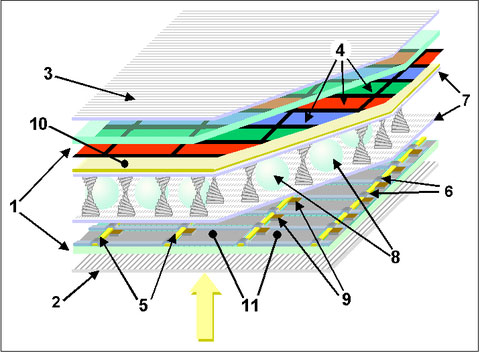
TFT panel device : liquid crystal matrix with dividers (8); control plate (5,6 - horizontal and vertical control buses; 9 - thin-film transistors; 11 - rear electrodes); 10 - front electrode; 1 - glass plates; 2,3 - horizontal and vertical polarizers; 4 — RGB filter; 7 - layers of durable polymer; yellow arrow—light from an external source.
TFD (Thin Film Diode) is a technology for the production of liquid crystal displays using thin film diodes. It is similar TFT technology, but here the transistors are replaced by thin-film control diodes. The main feature of such displays is reduced power consumption.
LTPS (Low Temperature Poly Silicon) is a technology for the production of LCD TFT displays using low-temperature polycrystalline silicon. This technology Provides increased image indicator brightness and reduced power consumption.
UFB (Ultra Fine and Bright) is Samsung's own technology based on the use of a passive matrix. Such screens have increased brightness and contrast, while power consumption is reduced compared to traditional LCDs. UFB displays, capable of displaying 262 thousand colors, have a contrast ratio of 100:1 and a brightness of 150 cd/sq. m, while consuming no more than 3 mW. In addition, the production of the new display, according to the developers, is cheaper.
OLED (Organic Light Emitting Diodes) - electroluminescent displays based on organic light-emitting semiconductors. The main difference is that backlight lamps are not needed; in the new displays, surface elements glow directly. And they glow significantly brighter than LCD screens (100,000 cd/sq. m). At the same time, power consumption is lower, color rendition is better, contrast is higher (300:1), viewing angle is larger (up to 180 degrees), and color gamut is wider. Unlike a conventional LCD display, organics can respond 100–1000 times faster. The display thickness does not exceed 1 mm (including 2 mm protective glass), weight is calculated in grams. An important parameter is the operating temperature range: from -30 to +60 degrees. The only disadvantage we can note is the relatively low lifetime (about 5-8 thousand hours), however, this is quite enough for a phone. How do organic screens work? Once upon a time, the inventors of fluorescent diodes discovered that if they combine two layers of certain organic materials and pass an electric current through them at some point, a glow will appear at that place. While using different materials and light filters, you can get different colors. Existing models, similar to LCDs, are divided according to the type of control matrix. There are OLEDs with passive and active matrices. The operating principle of the matrices is the same, but instead of a layer of liquid crystals, a layer of organic semiconductors is used.
If we compare modern OLED displays and good old LCD screens, the comparison will clearly not be in favor of the latter: LCD displays are already operating at the limit of their capabilities, the frame rate on the screen is low, and the power consumption, on the contrary, leaves much to be desired. Color LCD screens are difficult to see in sunlight and are quite fragile.
Of course, displays with active matrices (LCD TFT) are brighter and more contrasty than similar displays with passive matrices, but they are more difficult to manufacture, more expensive, and are used mainly in expensive devices.
The technology of organic displays is devoid of almost all the disadvantages characteristic of LCD displays, and provides much best characteristics Images. OLED Display - Physically, an organic electroluminescent display is an integral device consisting of several very thin organic films sandwiched between two conductors. Applying a small voltage (about 2-8 volts) to these conductors causes the display to emit light. The OLED matrix is based on polymer materials; their constant improvement greatly contributes to the improvement of displays and the development of matrix manufacturing technologies. Currently, two technologies are mainly being developed that have shown the greatest efficiency. They differ in the organic materials used: polymers (PLED) and micromolecules (sm-OLED). We will not consider them in detail, since for the phone user this is not of fundamental importance, and the manufacturer very rarely indicates the technical nuances of making the display in the phone specifications. What's good about OLED displays? Firstly, it is high brightness (up to 100 thousand cd/m2) and contrast (up to 300:1), which, in theory, should ensure readability of the display in any conditions. Next comes compactness and lightness, the display thickness does not exceed 1 mm (including 2 mm protective glass), weight is calculated in grams. The range of operating temperatures is also considered an important parameter. Both in severe winter (up to minus 30 degrees Celsius) and in summer on the beach (up to plus 60), the OLED display is operational. OLED displays are distinguished by decent mechanical strength and even... flexibility. However, the use of flexible substrates has already emerged as a separate area of FOLED. And finally, unlike existing TFT and STN displays, OLED displays consume noticeably less energy. By analogy with other displays, it is also possible to use a passive or active matrix. Most often, OLED displays are used as external (or auxiliary) displays, since making the main display of a phone based on OLED technology is expensive, to say the least. For this same reason, these displays are usually limited to 256 colors. For example, such a display with a resolution of 94 x 94 pixels is used in the LG G7030, while the Samsung SGH-E700 has a slightly lower resolution (96 x 64 pixels). In general, such displays look very good, providing a bright and readable picture, but, unfortunately, it is impossible to see anything on this display in the sun.
MEMS (Micro-Electro Mechanical Systems) - technology of microelectromechanical systems.
With the growing popularity of entertainment features, including built-in high-resolution cameras, mobile phones A very serious drawback was discovered - the high energy consumption of liquid crystal displays. In addition, with the massive spread of fashion for cameras, multimedia players and mobile games, LCD screens modern phones have become larger and brighter, and at the same time they remain on longer and longer, which ultimately leads to rapid battery drain. Another disadvantage of TFT screens is the loss of readability of the information they display in bright sunlight, which often makes using the phone outdoors on a sunny day extremely inconvenient.
Thanks to MEMS, or more precisely, the iMoD (Interferometric Modulator - interference modulator) technology built on the basis of microelectromechanical systems by Iridigm engineers, mobile phone displays that “blind” in the sun and “fading” in order to save battery power may, after some time, become a thing of the past .
The principle of the iMoD display is that a color image is formed through the interference of light waves, similar to how daylight acquires a certain hue in the pollen-covered wings of a butterfly. Each iMoD pixel is a micromechanical system consisting of transparent film and a mirror membrane, between which there is free air space. Interference occurs between light waves reflected from the film and waves passing through it and then reflected from the membrane. As a result, radiation of a certain color appears, which can vary from red to blue, depending on the size of the gap.
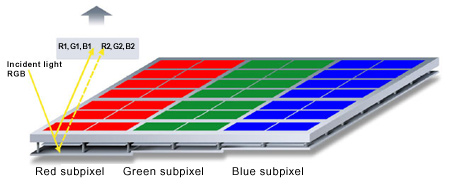
Structure of iMoD Interference Display
Displays built on the basis of this technology remain “readable” in any lighting. They have significantly lower power consumption compared to their liquid crystal competitors, since they do not require backlighting, and the energy in them is spent only on transferring the pixel from one state to another. It is also impossible not to note their small thickness - a godsend for mobile phone manufacturers, for whom the problem of saving space is extremely significant, especially in light of the increasingly popular ultra-thin models.
Recently, many abbreviations have appeared to designate the types of displays of mobile devices, which in turn often complicates the task of choosing the type of display when buying a mobile phone. In this article we will try to figure out what types of screens there are for mobile devices to help you decide on the choice of phone screen.
Currently, only two of the most common technologies can be distinguished: these are screens based on LCD(LCD displays) and OLED(organic semiconductor displays). The main difference from LCD is that there are no backlight lamps; in OLED displays, the surface elements glow directly.
So, let's look at the displays of each technology separately.
LCD (liquid crystal display), that is, displays based on liquid crystals (LCD). Liquid crystals, like solid ones, have a strictly defined crystal lattice structure and are transparent to light. But, unlike other crystals, liquid crystals can change their structure under external influence (electric current or temperature), twist, and become opaque. By controlling the current, you can create inscriptions or pictures on the screen. But it is worth noting that LCD displays are not able to work from reflected light, so a backlight lamp is a mandatory attribute. Due to the reduction in size, the lamp is usually located on the side, and opposite it is a mirror, so most LCD matrices in the center are brighter than at the edges.
LCD displays are also divided into two types: active And passive. TO passive matrices relate STN (Super Twisted Nematic), is a twisted crystal technology. This type of matrix is called passive because it is not able to display information quickly enough due to the large electrical capacitance of the cells, the voltage on them cannot change quickly enough, so the picture is updated slowly. Typically, STN displays have a lower resolution and display significantly fewer colors. Also among the disadvantages of these matrices are the small viewing angle of the screen and poor visibility in bright sunlight. And of the advantages of this type displays have a fairly low energy consumption and low cost, so they are actively used in inexpensive phones.
CSTN (Color Super Twist Nematic) is a more advanced STN technology. The first CSTN displays had long response times. Currently, displays with CSTN matrices provide faster response times, a wide viewing angle and high-quality colors that are almost as good as TFT screens.
FSTN (Film Super Twisted Nematic)- also a more advanced STN technology, the only difference is that FSTN matrices have a special film on the outside that allows them to compensate for color shifts, i.e. This is a matrix with film compensation, which improves the viewing angle, but the response time is still long.
DSTN (Dual Super Twisted Nematic)- improved STN technology. In such a matrix, one two-layer cell consists of 2 STN cells, the molecules of which rotate in opposite directions during operation. Light passing through such a structure in a “locked” state loses a significantly larger part of its energy. The contrast and resolution of DSTN matrices is quite high.
Samsung's own technology also applies to passive matrices. UFB (Ultra Fine and Bright). Displays created using this technology have increased brightness and contrast (capable of displaying 262 thousand colors), while power consumption is reduced compared to traditional LCDs, and their production costs are not high.
TO active matrices relate TFT (Thin Film Transistors)- a type of LCD display whose active matrix uses thin-film transparent transistors. that is, under the surface of the screen there is a layer of thin-film transistors, each of which controls one point of the screen. Thus, in a color phone display their number can reach several tens, or even hundreds of thousands.
The operating principle of the TFT matrix is to control the intensity of the light flux using its polarization. The polarization vector changes in liquid crystals depending on the electric field applied to them. For each pixel there are three transistors, each of which corresponds to one of three RGB colors and a capacitor that maintains the required voltage.
TFT matrices speed up the display, but problems remain, such as color rendition, viewing angles, and defective pixels- when the transistor fails. To combat color distortion when the view changes vertically, two methods have been developed: MVA(Multi Domain Alignment) - i.e. V this method the working cell was divided into two zones that are controlled simultaneously, but the LCDs in each of them are oriented differently. But the problem was still not completely solved, the method of rotating the LCD in one plane IPS(In-Plane Switching) turned out to be more successful in terms of overall color reproduction and, in particular, in the display of dark tones. In this method, control electrodes are placed on one surface in such a way that the force lines of the resulting electric field take on a horizontal shape. When a control voltage is applied, the LCDs rotate in one plane. The locked cell of an IPS panel allows significantly less light to pass through than an MVA cell, and the overall transmission response appears smoother and free of dips. Further improvement of this technology gave birth to the S-IPS, SFT, A-SFT and SA-SFT families.
TFD (Thin Film Diode)- technology for the production of LCD displays using thin-film diodes. It is similar to TFT technology, but here the transistors are replaced with thin-film control diodes. The main feature of such displays is reduced power consumption.
LTPS (Low Temperature Poly Silicon)- technology for the production of LCD TFT displays using low-temperature polycrystalline silicon. Those. This technology allows you to place on the display glass big number transistors made from silicon crystals, which are subjected to high temperatures for this purpose (laser annealing). This technology provides increased image brightness and reduced power consumption.
Gradually, LCD screens began to crowd out new technology OLED (Organic Light Emitting Diodes) those. displays based on organic light-emitting semiconductors. The main difference from LCD screens is that they do not require backlights; in new displays, surface elements glow directly. And they glow tens of times brighter than LCD screens, while consuming much less electricity, and also provide good color rendition, high contrast and wide viewing angle (up to 180 degrees). Among the disadvantages, one can note the relatively low lifetime, although it is quite enough for a phone.
An OLED display is a single unit consisting of several very thin organic films sandwiched between two conductors. Applying a small voltage (about 2-8 volts) to these conductors causes the display to emit light. The OLED matrix is based on polymer materials. Currently, two technologies are mainly being developed that have shown the greatest efficiency and differ in the organic materials used: polymers (PLED) and micromolecules (sm-OLED).
Organic display technology eliminates most of the disadvantages of LCD displays and provides much better image performance. The advantages include high brightness and contrast, compactness and lightness, display thickness does not exceed 1 mm, mechanical strength, and even flexibility, and unlike existing TFT and STN displays, OLED displays consume noticeably less energy. One of the disadvantages of OLED displays is their high cost.
Existing models, as in the case of LCDs, are divided according to the type of control matrix. There are OLEDs with passive, and there are also with active matrices (TFT). The principle of operation of the matrix is the same, but instead of a layer of liquid crystals, a layer of organic semiconductors is used. TFT OLED is one of the fastest, provides simply stunning pictures, and also shows well in sunlight.
Now, after reviewing the main types and technologies of mobile phone displays, the task of choosing a phone becomes easier. So, if you need a phone just to make calls, then you should consider cheaper models based on STN technology; such a phone will also consume less energy and thus need to be charged less often. If you need a not very expensive phone, but with many modern features and good quality, then you should take a closer look at phones with LCD TFT screen. Well, if you can afford very expensive phone models with correspondingly very high image quality for viewing photos and videos in high quality, then it’s worth taking a closer look at OLED TFT displays, although LCD can also be considered IPS screens etc.
Our eyes are the main source of information received by the brain. Therefore, the screen is the most important part of a mobile phone and tablet. It is from it that we read information and manage the interface. In this issue of the column, we will figure out how mobile device screens work, what they are like, and how to choose the right smartphone based on this parameter.
While television screens and computer monitors at the dawn of technology used the principle of a cathode ray tube (CRT), for mobile devices this approach to image formation was unacceptable due to their small size. In the 70s of the last century, the first monochrome liquid crystal screen was introduced. At first it was used mainly in calculators and electronic watches. With the advent of mobile phones, the technology for producing displays based on liquid crystals migrated to them. Over time, new technologies based on organic light-emitting diodes appeared, screens became touch-sensitive and flexible.
Almost any liquid crystal screen (LCD or LCD in English) consists of the following components:
- Layers of liquid crystals that transmit light.
- Active matrix responsible for image formation. Its most common type is TFT, which is controlled using thin-layer transistors.
- Light filters for obtaining a color image. As a rule, this is an RGB system - red, green and blue
- Light source. It can be either active (smartphones, TVs, monitors, etc.) or passive - calculators, electronic watches.
There are many varieties of LCD displays. The simplest and cheapest of them TN (Twisted Nematic). It has poor viewing angles, contrast and color reproduction, but has a high response time. It is used mainly in budget devices and is gradually leaving the market. A more advanced technology is IPS (in-plane switching). Unlike TN, it is characterized by high viewing angles, excellent color rendering, and increased contrast. There are many varieties of IPS that have different manufacturers have their own names. Basic:
- Just IPS- gradually dies out, the main disadvantage is the long response time of the active pixel. But it is also very often used in budget smartphones.
- AS-IPS- advanced IPS, characterized by more high degree contrast
- IPS-pro- the next step in development with higher brightness and color rendition. This display has mainly found its use in flagship gadgets.
Widely known display type Retina is a type of IPS, but with high resolution and reduced subpixel and pixel sizes. But Samsung has it PLS- the same IPS modification, which is designed to reduce production costs.
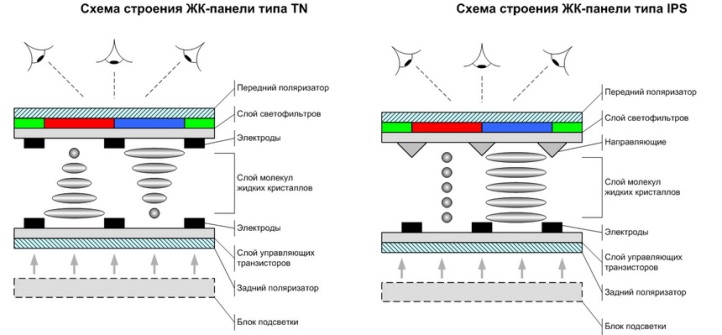
In addition to IPS, there are also LCD displays called Super LCD (developed by HTS), Super Clear LCD(Samsung) VA/MVA/PVA(mainly used in monitors).
Another stage in the development of displays is technology that is based on organic light-emitting diodes - OLED(Organic Light Emitting Diode). Its essence is to use organic LEDs instead of liquid crystals, which require backlighting. They glow themselves.
There are several types of OLED displays:
- AMOLED(ActiveMatrixOLED) - uses organic LEDs that are controlled by a matrix based on thin film transistors (TFT). An interesting feature is the formation of black color - the LEDs are simply turned off, and the result is a true deep black color, while reducing the power consumption of the device as a whole. That's why smartphones with AMOLED screens dark themes are recommended.
- SuperAMOLED- improved AMOLED. This technology ensures that there is no air gap between the screen and the sensor. As a result, the thickness of the display is reduced, color rendering and brightness are increased. Such screens are widely used in their flagships by Samsung, Motorola and others.
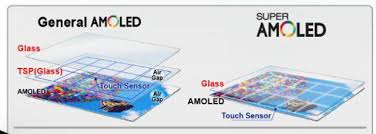
- FOLED(Flexible OLED) - technology that allows you to create flexible displays based on organic crystals. A striking representative of such an implementation is the line Edge smartphones from Samsung.
Still exists TOLED(TransparentOLED) - transparent displays, SOLED(Staked OLED) - stacked OLEDs, but they may not be used in smartphone displays yet.
In general, OLED technology has a number of advantages over LCD:
- Small screen thickness
- Low power consumption
- Very fast response
- High Contrast
- Possibility of creating flexible displays
But there is a significant drawback - the lifetime of LEDs. Over time, they die and the image on the screen is distorted. Although this may be a temporary problem with organic displays. After all, science does not stand still and new long-lasting LEDs are being developed.
The next stage of development could be displays with TMOS (time division optical shutter) technology. Such screens can be brighter, more energy efficient and cheaper to produce than LCD and OLED.
Let's take a brief look at other features of modern gadget screens.
Today, controlling a smartphone with your fingers has already become commonplace for us. The sensor on the screen is responsible for this function. I want to tell you about their main types:
- Resistive sensor- consists of a glass plate and a membrane on which a resistive coating is applied. When we press our finger on the screen, the membrane and plate close and transmit the coordinates of the press to the microprocessor. Their advantage is that such a sensor will respond to any object. It is also simple and cheap to manufacture. Disadvantages include poor security, light transmission and durability. Widely used in early PDAs and smartphones. Today this is already a rarity.

- Capacitive sensor- the principle of operation is that when our finger touches the glass on which an electrically conductive layer is applied, current leakage occurs. And the place of the greatest leak (the point of contact of the finger with the glass) is registered by a special controller. Such sensors are more transparent than resistive ones, and also withstand more than 200 million clicks. But they do not react to touch, for example, with gloves. Capacitive sensors are installed mainly in budget smartphone models.
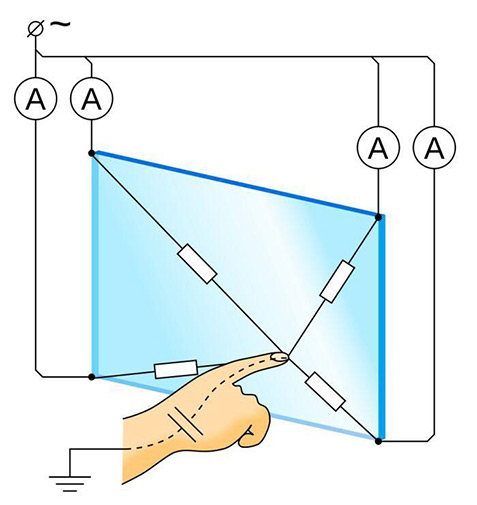
- The next step in development was projected capacitive touch screens. An electrode grid is applied to the glass of such a screen (on cheap Chinese phones it can even be seen), which, together with a human finger, forms a capacitor. Special electronics measures its capacitance and determines the point at which there was contact. The advantages are very high durability, sensitivity, and this technology allows you to recognize multiple presses at the same time, in other words, it supports multi-touch. The disadvantage is the need for complex electronics for signal processing, and therefore the high cost. Many modern gadgets use this type of sensor.
![]()
These were the main types of sensors used in modern smartphones.
Next we will talk about screen pixel density. This value is the ratio of screen resolution and its physical size. In other words, the number of pixels per inch of smartphone diagonal. These numbers are usually measured in ppi (pixel per inch). Let me give you an example: a screen with a diagonal of 5.1 inches and a resolution of 2560×1440 pixels has a pixel density of 577 ppi. The higher the number, the clearer and more detailed the image on the smartphone screen will be. But will our eyes be able to distinguish the differences, for example, between 400 and 500 ppi? Marketers of development companies are confident that it can, but I personally doubt it...
To prevent the screen of our favorite smartphone from scratching and breaking, all kinds of safety glasses. One of the most famous in the world is Gorilla Glass. Recently, its fourth revision was presented. According to the developers, Gorilla Glass 4 has twice the resistance to damage compared to competing aluminosilicate glass. Less known, but no worse in terms of characteristics, is Dragontrail high-strength glass. For example, it is widely used in its smartphones by the Chinese manufacturer Xiaomi.
Screen glass is also often coated with a special oleophobic coating, which is designed to protect against grease stains.
1. It is better to choose IPS or OLED technology than TN.
2. Much depends on the display manufacturer, beware of Chinese “no names”. Choose screens from LG, Sony, Sharp and other famous companies.
3. There's no need to worry too much about pixel density. HD resolution is sufficient with a diagonal of 5", FHD - with 5.5".
4. Whichever good glass No matter what, stick a protective film on top, or better yet, special glass.
P.S. The article does not talk about the structure of the display pixel. The topic is interesting and voluminous; we will devote a separate material to it.
